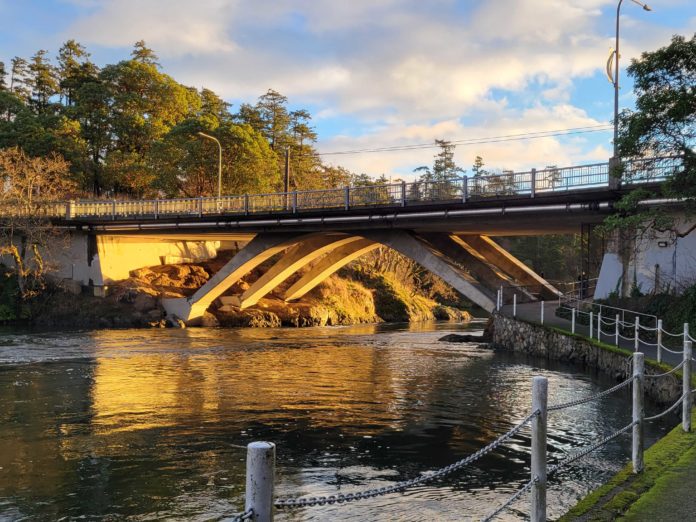During construction of the Tillicum Road bridge (Gorge Bridge) and the Esquimalt Gorge Park in the late 80s and early 90s, an archaeological site was discovered and it is believed to date back over 5,000 years.
The site that was discovered is called a midden, which is a place where food waste, animal bones, shells, broken pottery and other items are found that indicate a prehistoric human settlement.
The site above the Gorge Narrows, beneath the Tillicum bridge, just happens to be the oldest midden found on Vancouver Island.
The importance of the Gorge Narrows
The Gorge Narrows are one of two reversing falls in Canada and they are a sacred and ancient place for the Coast Salish people.
It is said that people from the Songhees Nation would dive into the waters of the narrows in order to gain powers.
Halyas, who is said to be a transformer being, turned a young girl into a stone and cast her into the narrows. That girl was named Camossung (whose namesake lives on through Camosun College and Camosun Street).
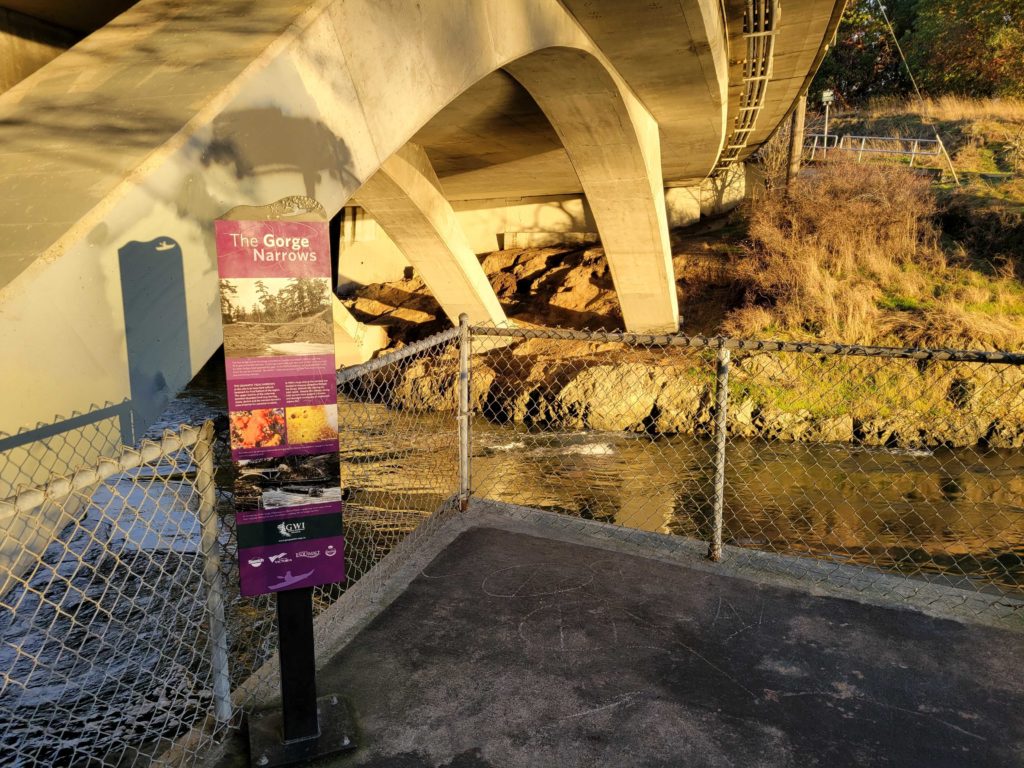
She was turned into a stone because she was hungry and her grandfather wouldn’t feed her, but she got picky while bargaining for food with the powerful being and eventually agreed to eat some oysters which were offered to her.
This is said to be why the Gorge was once plentiful in oysters.
According to Songhees stories, Camossung was turned into a stone and cast in the Gorge Narrows along with her grandfather to look after their food resources.
After this, the Narrows and the Tillicum midden became a place to meet, gather, eat, hunt and forage for oysters for the Songhees Nation of prehistory.
History of the midden
The Tillicum midden was initially discovered while adding a walkway beneath the Gorge Bridge to better view the reversing falls of the Gorge Narrows in 1989.
Archaeologist and anthropologist Grant Keddie, known for his work in observing and documenting Songhees history, was called along with some colleagues to extract data and determine how old the midden was.
In 1991, the Township of Esquimalt was planning on constructing a secondary walkway through the exact location of the midden and those efforts were halted due to Keddie’s swift impact assessment permit application to the Archaeological Branch of BC and the Archaeological Society of British Columbia’s (ASBC) emergency response team. The area was then preserved for scientific study.
In the upper layers of the midden, Keddie and his team found oyster shells–once abundant in the region prior to colonization–and below that were the shells of bent-nose clams and bay mussels. Herring bones were found sparsely throughout the layers of the midden as well.
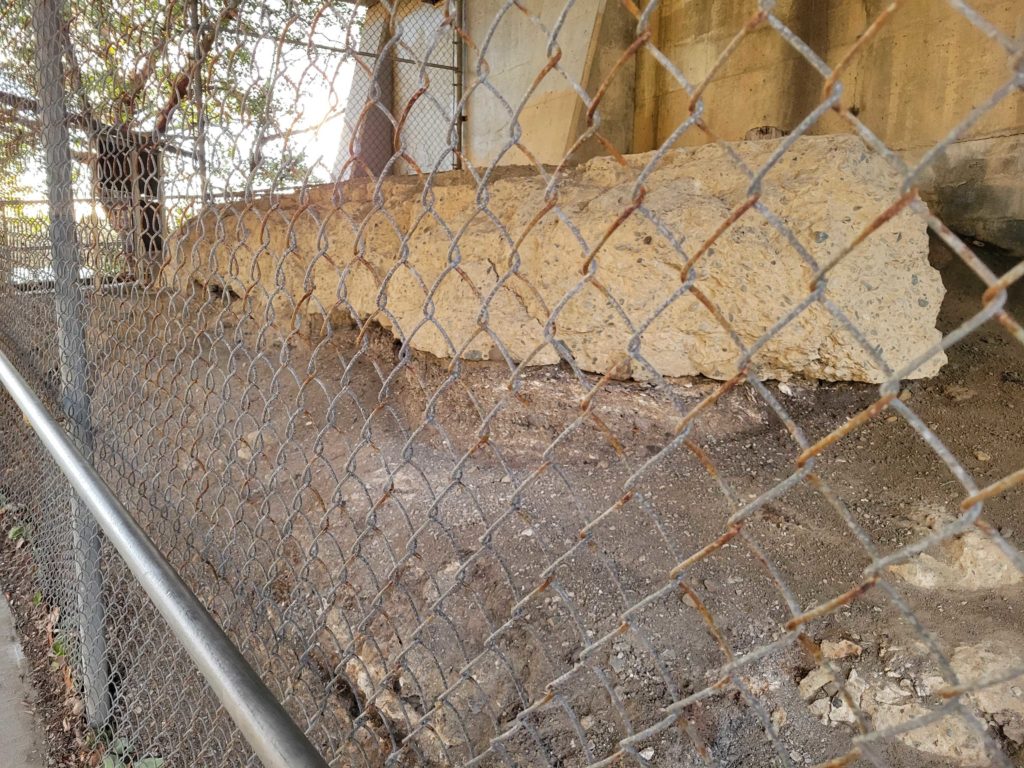
In the “dark zone” layer beneath that, archaeologists found a small object with two holes in it thought to have once been an ornamental decoration of some sort. The region of the layer this object was found dated back over 1,700 years.
Keddie and his crew continued to carefully excavate and found in deeper layers of the midden more shells, bones and fire broken rock. The layers continued much deeper than middens such as the Fleming beach midden located near Macaulay Point. That midden dates back to approximately 4,181 years.
Other similar middens in and around Victoria date back only around 2,800 years. A Willows Beach midden, a midden at the Maplebank site in the Esquimalt Harbour, and a midden found on the Goodridge peninsula are all among these.
Following the observation of the site, steps were put in place to preserve the site.
A chain-link fence was installed around the midden that remains intact following the construction of the walkway along the narrows and the bridge that crosses them.
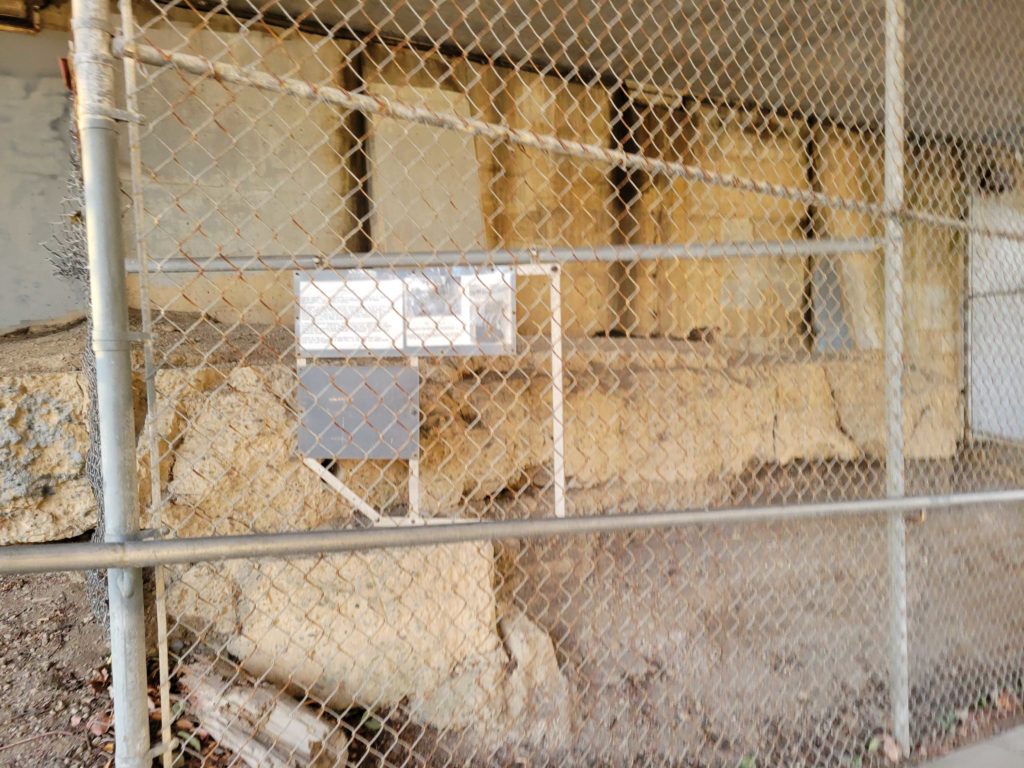
Along with the fence, a makeshift informational sign can be seen at the site of the midden.
The future of the midden
Keddie wrote in a 1991 newsletter about his efforts to study the Tillicum midden and in it he shared his vision for the future of the site.
“I dream of seeing a South Gorge Bridge site developed into a permanent outdoor exhibit with bright murals of native fishing activities instead of graffiti on the bridge wall, plasticized exposures of excavated midden faces and attractive posters that explain the nature of the site,” wrote Keddie.
The Township of Esquimalt’s Communications Manager, Tara Zajac, told Victoria Buzz that this is and has been on the Township’s radar for some time and she is hopeful that something more informative and more permanent can become part of this piece of Esquimalt’s history.
The new town council has made garnering better relationships with the Songhees and Esquimalt Nations a priority in their Strategic Plan and this project could fall within the scope of that plan, according to Zajac.
However, she also said that it is important to the Township to go about the implementation of an educational sign and an improved preservation of the site in accordance with the Songhees and Esquimalt Nation’s wishes.
“The township is supportive of replacing the sign with something that appropriately reflects the cultural significance of the location and is actively looking at options,” Zajac told Victoria Buzz.
“It is important that we get direction from First Nations before moving forward with design options.”
For now, Zajac said that the Township of Esquimalt is considering a temporary sign as an interim measure to update the current iteration to inform passersby of the importance of this archaeological site.
Mystery of the current sign’s origin
Oddly enough and to the dismay of the Township, currently no one knows of the origins of the current sign at the midden.
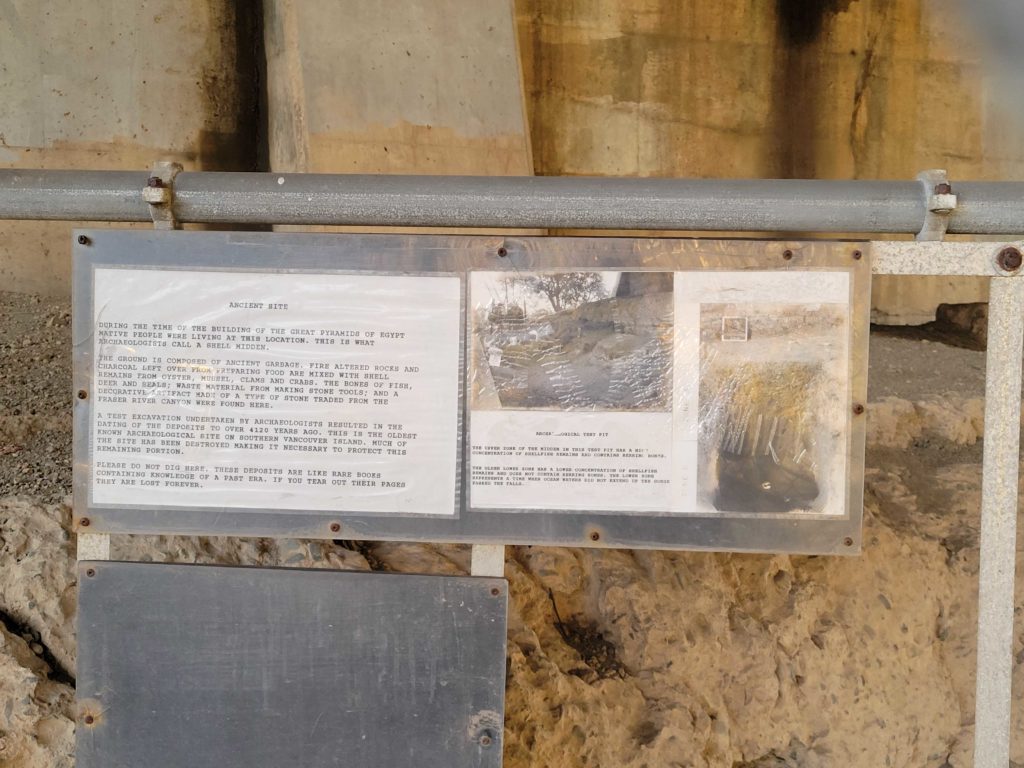
It looks homemade in nature and is within the confines of the chain-link fence that preserves the midden currently.
According to Zajac, the sign is thought to be at least 20-years-old in origin.
She asks that anyone who knows the origins of the current informational sign at the midden, contact the Township of Esquimalt.


